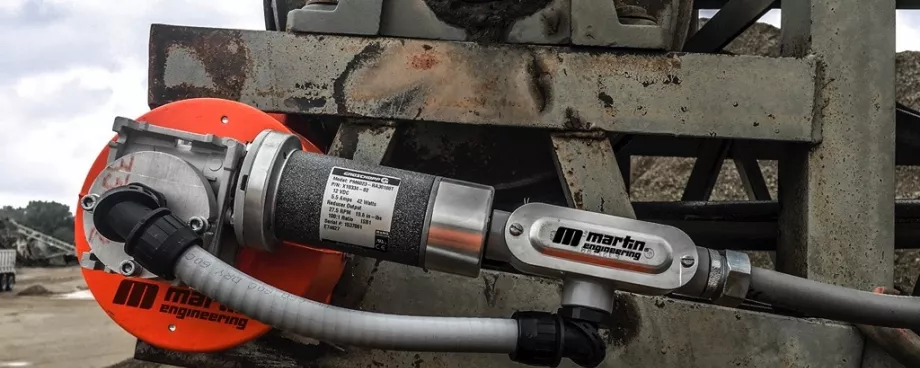Other Factors
The importance of proper installation should not be overlooked for the proper performance of the belt cleaner. Slight variations in the location of the support frame relative to the belt can cause significant issues with the effectiveness of the blades and can result in support frame bending. Most manufacturers provide detailed instructions for the location of the support frames and tensioners, which must be followed for optimal function.
To be effective, belt cleaners should be frequently inspected and maintained. In practice, the design of the conveyor structure and location of the drive and other equipment makes service difficult. Consideration in the design stage for easy access and ergonomic location of the cleaners for inspection and service will pay dividends in reducing carryback, maintenance time and potential exposure to injuries.
To maximize blade effectiveness and minimize rapid wear, the recommended adjustment protocols should be followed. Studies have shown that there is a critical cleaning pressure range for various types of cleaners and blade types. These studies demonstrate that over-tensioning the belt cleaner does not necessarily improve the cleaning effect, but often results in increased belt and blade wear as well as higher power consumption.
The Future of Cleaner Tensioning
As technology continues to advance, suppliers are beginning to integrate an increasing level of functionality in belt cleaner designs. One such innovation is a belt cleaner position indicator that can monitor the blade and estimate remaining service life based on the current hourly wear rate. Able to retrofit directly to existing mainframes, the device is capable of sending a notification to maintenance personnel or service contractors when a cleaner requires re-tensioning or replacement.
This capability brings a number of benefits. Inspection and service time is reduced, as maintenance personnel no longer need to physically view the cleaner to determine the tension or wear status. It also reduces the time workers need to spend near the moving conveyor, helping to minimize the potential for accidents. By relying on data – not human judgement – to maintain the appropriate tension for optimal cleaning performance and monitor blade wear, the indicator maximizes service life and reports with certainty when a blade is nearing the end of its useful life, delivering a greater return on cleaner investment. Replacement orders can be scheduled for just-in-time delivery, reducing the need to stock parts inventory, and installation can be scheduled for planned downtime instead of on an emergency basis.

Taking the technology a step further is another patent-pending device that combines the position indicator with an automated tensioner. This novel powered assembly incorporates sensors that constantly monitor blade pressure and adjust its position to maintain optimal cleaning tension. Maintenance personnel no longer need to visit each cleaner and manually re-tension. Instead, the tasks are performed automatically, reducing maintenance time while maximizing the usable area of every cleaner. Analytics provide an unprecedented view and understanding of belt cleaner performance, with real-time data available remotely via a specially-designed app.
Conclusion
While manufacturers continue to improve belt cleaner effectiveness, it has become clear that there is no single or ideal solution for belt cleaning and tensioner selection. Safety of personnel and the belt itself is an important consideration when selecting a tensioner. Ease of inspection and maintenance is critical for belt cleaner effectiveness, so the tensioner must allow for quick and safe service.
The selection of a belt cleaner should be based on the duty rating of the cleaner as provided in CEMA Standard 576 and then the appropriate cleaning system selected. The system should be selected based on life cycle cost and not just the initial price. The investment for effective belt cleaning is justifiable on direct cost reduction (cleanup costs), extended component life (often 25% to 40%) and reduced exposure to injuries, which is directly related to reduced cleanup frequency.
■






















